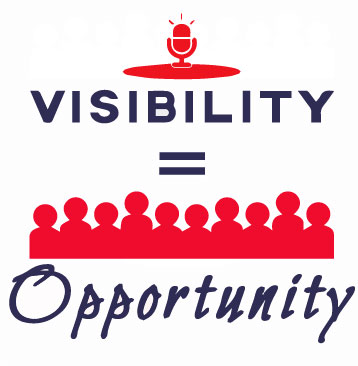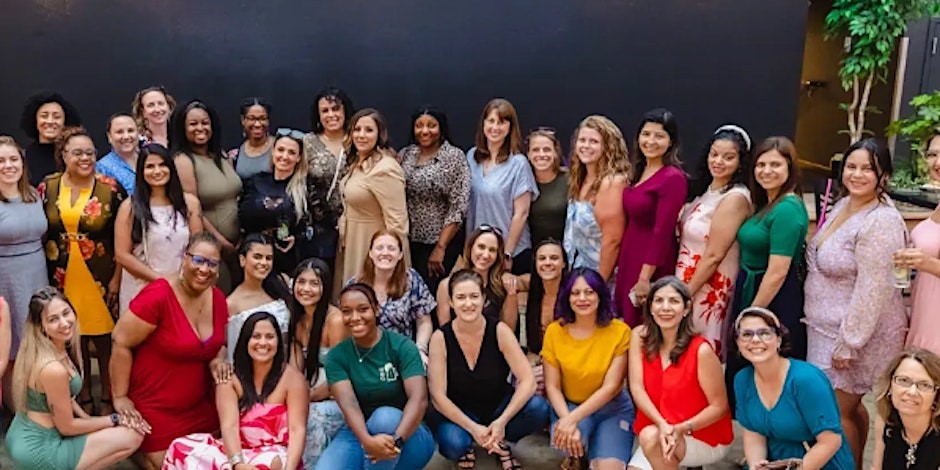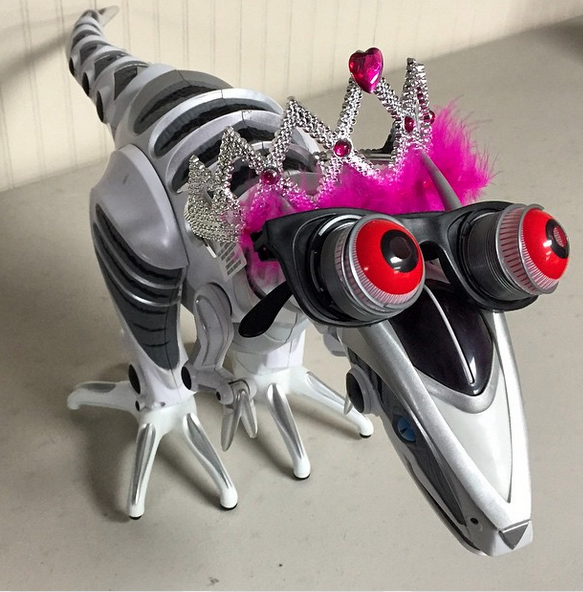
We talk a lot about how public speaking adds to credibility and thought leadership status. It puts us in front of potential customers, partners and employers. It increases our reach into new markets. It helps female founders get funded. It might help us get a new job, a promotion or even a board seat.
But sometimes even those (awesome) benefits just don’t seem like enough. You’re asking yourself, “Should I give up a whole day so I can go and speak at a breakout panel, to a room of 50 (75, 100, 200) people?”
Let’s follow a speaker, her speech and see how far they go. We’ll follow the path the promotion of a speech takes and see its total impact.
Sue gets asked to lead a breakout panel about cyber-security at a major security conference. The conference organizers ask her for her picture, her title and company name, a biography and a description of the panel. How does this information gets used?
Conference organizers have a 10,000-person mailing list, more than 20,000 followers on social media and partner organizations with another 20,000 subscribers. Even with a single mailing or post to each group, the potential audience is at 50,000 before Sue walks through the door of the conference center. Her session description is included on the website which receives more than 3000 visits in the month leading up to the event. When she arrives at the conference, her session (her picture, name, title, company name and session description) is included in the program handed out to more than 10,000 attendees.
Finally Sue and the other panelists get to their room. Before they walk onstage, one of the speakers suggests a group photo; she shares it on her Instagram… with 2000 followers, #womenintech #womeninsecurity.
During the talk, 5 members of the audience of 200, representing more than 5000 combined followers on Twitter, post quotes from the panel and tag Sue, her company and the event.
The conference organizers video the panel and later it will go up on YouTube and the conference organizer’s website.
A reporter is in the audience and takes note of Sue, interviewing her for a story which is included in the next month’s issue of the publication. This story is read by more than 5000 subscribers.
Another event manager reads the article and invites her to speak at another conference, starting the process all over.
But perhaps best of all, four prospective customers are among the extended audience and immediately start talks with Sue about her company and its services. These are the results you might be looking for too.
Pre-event marketing
When you agree to a speech, whether a keynote, a featured speech, participation in a panel, a workshop or breakout, you become part of an event and as such, your name, image, company name, biography, speech title and abstract become part of the event marketing materials. Event organizers collect speaker headshots, company logos and biographies for a reason; they play an important role in marketing for the event. Don’t delay in sharing your headshot, bio and panel description. You want to be included in all the marketing leading up to the event.
Prospective attendees want to know who is speaking at the event and what they will learn. They want to know more about you as a speaker and what expertise you bring to the table. For a typical event, before you ever speak a word:
- Your name, title, company name and your session title could be included in pre-event email blasts, advertisements, social media posts and on the event website. You might see yourself on multiple event websites like Eventbrite.
- A single email blast could put your information in front of thousands of readers. But most marketers don’t stop with one email – you might be included in regular organizational newsletters, follow up emails, reminders, ICYMI messages and confirmations.
- There might be a press release that includes you.
- Many events now provide digital “speaker cards” which organizers send to the speakers. These include the event name, event artwork and your session information. You have probably seen these posted by other speakers – “I’m speaking at…” These may get shared by others but they also add credibility.
- Many organizers have a network of partners that help them promote each event. They send out a social media “cheat sheet” that includes pre-written copy for events, including speaker details and artwork.
- You may also have your own partners who promote your speaking engagements – “Our friend, Jane, is speaking at XYZ conference next week.” (At Innovation Women, an important part of our offering is that we promote our members’ speaking engagements because we know that ‘speaking begets speaking’.)
Event Day
Arrive onsite for the event and you will be greeted by another wave of visibility. Again, your visibility isn’t limited to the audience in the room when you speak. Look for your information in:
- The program
- The event app (if there is one)
- Signs and posters
- Screens
- Social media posts and shout-outs from the organizers, other speakers and attendees
- Conversations – yes, word of mouth is still important.
During Your Presentation
Finally, you’re onstage and giving your presentation. Include your social media handles on your slides, any backdrops or signage, or mention the handles during your presentation and you may find your messages getting shared while you are speaking. Today’s audiences can be packing a good-sized community in their pockets, backpacks and purses.
- Approximately two-thirds of LinkedIn users have more than 500 first-degree connections, according to a 2016 Statista study. The same study says almost 60 percent of Facebook users have more than 200 friends.
- In that same year, KickFactory looked at millions of Twitter users and concluded that the average user had just over 700 followers.
- While these numbers bode well for someone seeing a message about you shared by a connection, a well-placed hashtag can help you achieve “escape velocity” and get noticed by people outside the group and the group’s immediate connections.
- Share the stage with others? These other influencers could be a great source of visibility for you – via social media, a blog or again, word of mouth.
After Your Presentation
What happens after you leave the stage and the conference itself? The visibility of you and your presentation keep on rolling.
- It’s not unusual for people to write follow up blog posts after an event or write a report for others at their company who were not able to attend the event.
- Perhaps there was a reporter in attendance who caught your presentation and includes you in an event roundup article.
- The conference itself might have follow up posts, emails, articles, video.
- What if your presentation was caught on video? That presentation could be viewed for years afterward.
- Your association with the topic improves the search engine ranking for your website and increases your website traffic.
- Your presentation and association with the topic and event could attract attention and you could be asked to present on the same or a related topic. And start the process all over again.
The next time you consider an invitation to speak, don’t stop at the size of the room when you think about your potential audience. The potential scope and influence of your speech is infinitely broad and isn’t limited to those who actually hear your speech.
Say “Yes” to public speaking! You might be surprised at the reach of your speech.


